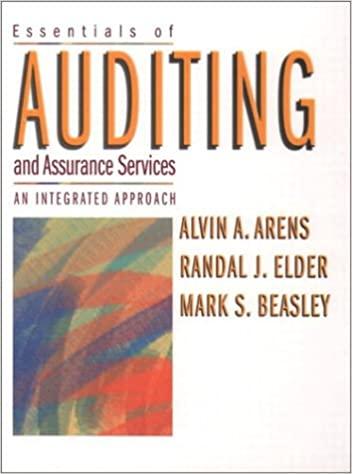Question
Specific Instructions for this Discussion In May 1968, Ford Motor Company began designing and developing a subcompact car, which it ultimately named the Ford Pinto.
Specific Instructions for this Discussion
In May 1968, Ford Motor Company began designing and developing a subcompact car, which it ultimately named the Ford Pinto. Because Ford wanted to gain a large market share, the entire design and development process was accelerated.
On August 10, 1978, three Indiana teenage girls in a Ford Pinto were killed in a rear-end collision with a van. Two of the passengers were burned to death in the car, and the other was ejected from the vehicle and later died. During the investigation, law enforcement discovered drugs and alcohol in the van that rear-ended the car.
Following an investigation, the prosecutor took the unusual step of pursuing criminal charges against Ford. The charges related to specific design elements of the vehicle. The Ford Pinto was unusual because the fuel tank was located behind the rear axle instead of above it, and the distance between the rear axle and the fuel tank was only nine inches. The fuel tank was also prone to puncture in a rear-end collision because of the placement of bolts. Finally, the fuel filler pipe design made it more likely that it would disconnect from the tank in the event of an accident, which increased the likelihood of fuel spills. This video is from a crash test illustrating the vulnerability of the Ford Pinto
In addition, please read Case: The Ford Pinto.
Even prior to the death of the teenage girls, Ford had been aware of the Ford Pinto susceptibility to fire in rear-end collisions. In 1973, Ford conducted an internal analysis of the costs and benefits of retrofitting existing vehicles and altering the design for the production of new vehicles. In addition, Ford considered the option of doing nothing. The cost-benefit analysis was presented to senior management, and the memorandum outlining the analysis later became public.
The following figures are from that memorandum and compare the two options: (i) repairing existing vehicles and modifying the design of vehicles to be built; and (ii) doing nothing.
Expected Cost of Repair/Modification:
Cost per unit: $11.00
Number of units: 12.5 million
Total cost: $137.5 million
Expected Costs of Accident Results (assuming out-of-court
settlements to pay the victims and their families):
Burn deaths: 180 x $200,000 per person
Serious burn injuries: 180 x $67,000 per person
Burned-out vehicles: 2100 x $700 per vehicle
Total costs: $49.53 million
Final Analysis:
Cost of Repair/Modification: $137.50 million
Less Cost of Accident Results: $ 49.53 million
Difference/Savings: $ 71.47 million
Based upon its analysis, Ford decided not to repair existing vehicles or modify the design for vehicles it was producing. Instead, it elected to pay the victims and their families, which was estimated to produce a cost savings to the company of over $70 million dollars.
It is unclear exactly how this information was utilized by Ford management, and even today, controversy remains about how early senior managers became aware of the problem of crash-induced fires in the Ford Pinto.
Discuss your answers to the following questions in detail and cite references to materials above and outside sources (as appropriate):
- Is it ethical for a company, such as Ford, to perform a cost-benefit analysis when human lives are involved? Why or why not?
- Assume that the Ford Pinto met the safety requirements imposed by law at the time. Did Ford have a higher obligation because it knew of the gas tank issues but the general public did not? Why or why not?
- Fast forward to today. If a situation like this arose today, would a company address it in the same way as Ford did in the 1970s? Why or why not?
Please keep in mind that you must convince me that you have read the material and carefully considered the questions posed to receive full credit. You must answer each question separately (i.e., separate numbered paragraphs), and in answering each of the questions, you should be writing at least 4 to 5 sentences per answer to each question. You must cite to your sources to support your initial post
Step by Step Solution
There are 3 Steps involved in it
Step: 1

Get Instant Access to Expert-Tailored Solutions
See step-by-step solutions with expert insights and AI powered tools for academic success
Step: 2

Step: 3

Ace Your Homework with AI
Get the answers you need in no time with our AI-driven, step-by-step assistance
Get Started


